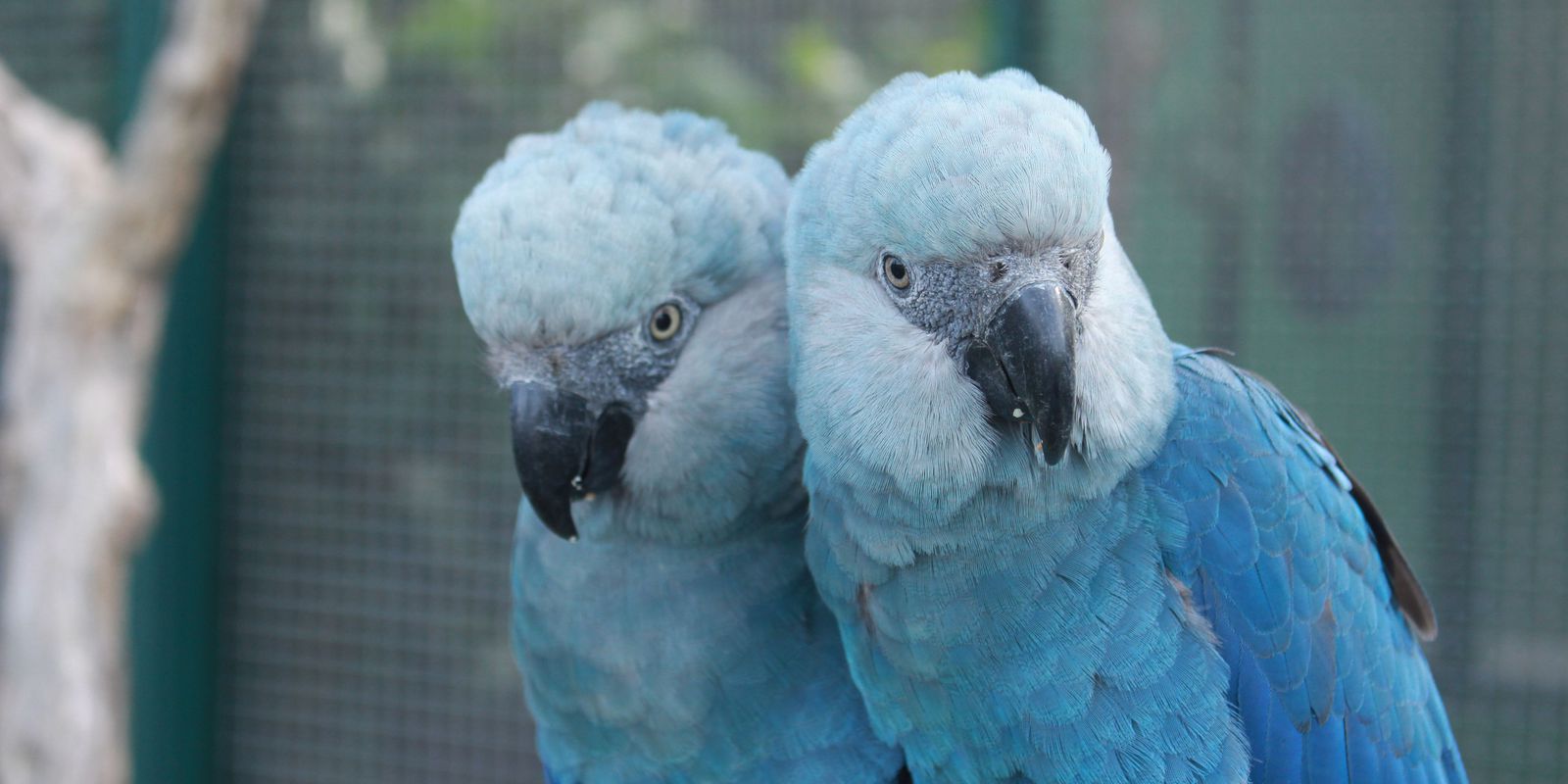The year was 2000, Brazil celebrated the 500th anniversary of the arrival of the Portuguese in the country, or, more specifically, on the south coast of Bahia. Further north from where the caravels landed, in the interior of the same state, Brazilians saw, for the last time in nature, a wild Spix’s Macaw (Cyanopsitta spixii).
Discovered in 1819, the species, which belongs to the same family as macaws and parrots, suffered a gradual process of extinction in nature, due to the destruction of the environment and the capture for the illegal trade of wild animals.
Only two traffickers were responsible, in the 70s and 80s, for taking 23 macaws from the wild.
In 1986, the last known wild population had just three birds. In 1990, only one male remained. Ten years later, there were no wild birds left.
This process, accompanied by the press, caused worldwide commotion and the bird ended up becoming one of the symbols of the fight against the destruction of fauna and the loss of biodiversity, having even been portrayed in the North American animated feature Rio.
Captivity
Since then, a project to reintroduce the species into nature has begun. Ironically, one of the reasons that led to its disappearance from the Bahian forests was its salvation: the capture of the bird for maintenance in captivity.
A population of a few dozen birds continued to be kept in captivity by breeding sites in Brazil, Europe and the Middle East. Still in the 1990s, the Brazilian government started a management project for the reproduction of these animals and the negotiation of the return to the country of part of the birds that were abroad.
In 2018, two areas were demarcated for the reintroduction of the species, the Spix’s Macaw Environmental Protection Area and the Spix’s Macaw Wildlife Refuge, together totaling 120,000 hectares in the municipalities of Juazeiro and Curaçá, in Bahia.
Back
Two years ago, 52 Spix’s Macaws were brought back to the country, based on an agreement with the German breeder ACTP, and installed in a nursery in the municipality of Curaçá, for their environment, which involved reducing their contact with humans. ; living with maracanã macaws (Primolius maracana), with whom they shared their natural habitat and who have habits similar to theirs; flight training; the recognition of predators; and the supply of food that will be found in nature.
Now, more than 20 years after being declared extinct in the wild, the macaws will once again fly through the Brazilian caatinga. This Saturday (11), the release of the first eight birds is scheduled. 12 more will be released in December.
They were selected among those that showed greater adaptation to life in nature, that is, those that fly better, that are better related to the group, that are healthier, that are able to better identify predators.
The first eight birds are going through the last days of acclimatization in a captivity, together with the maracanãs, with which they will be released.
In nature
According to the coordinator of the National Action Plan for the Conservation of the Spix’s Macaw, Antonio Eduardo Barbosa, the release will involve the opening of the enclosure where they are settling. The doors will be kept open during the day and closed at night to prevent the macaws returning to captivity from being killed by predators.
“It will be a mild release, as we call it. We open the enclosure, but we want the birds to remain there. Supplementary food will be offered for a year, so that they can still visit the enclosure. In this first experimental release, we want to know the dynamics that the birds will present”, he explains.
At that moment, the researchers will take the opportunity to observe the behavior of the macaw in nature, that is, the places they visit, what they eat, what habitat they are exploring.
The animals will be tagged with rings and given transmitters, which will allow them to be tracked for a few months.
Barbosa acknowledges, however, that the reintroduction process will not be so easy, starting with the environment itself, from which the species has been away for two decades and which is very dry at certain times of the year, which will lead the birds to fly great distances in search of food.
Electric power transmission lines are another challenge for birds that fly through the region, as is the existence of European bees (Apis mellifera), an exotic species that occupies natural cavities in the area where the macaws could nest. “Although we have done some work to control these bees, to reduce this pressure a little”, said the researcher.
Not to mention the risk of new captures for the clandestine rare bird market. “We have to have the community on our side, being vigilant in the region for any type of activity in this sense, being our spies and denouncing any environmental illicit”, defends Eduardo Barbosa.
The Chico Mendes Institute for Biodiversity Conservation (ICMBio) did not inform Agência Brasil about the inspection scheme or how many agents will patrol the area.
Future
Once the threats are overcome, there is still the challenge for the species to thrive and reproduce, increasing the population naturally, as was achieved, with relative success, with specimens in captivity.
There are about 200 Spix’s Macaws, including those in the process of being readapted for release and those kept in captivity around the world, a number much higher than the few dozen that there were in the 1990s.
In the two years they have been in Brazil, three macaws have been born, increasing the population of Curaçá to 55 birds, according to Barbosa. There is no prediction of when there will be new releases from 2023, but the idea is to keep part of these 55 in captivity, as if it were a reserve to guarantee the survival of the species, the release of new individuals and the replacement of the expected losses in the environment.









